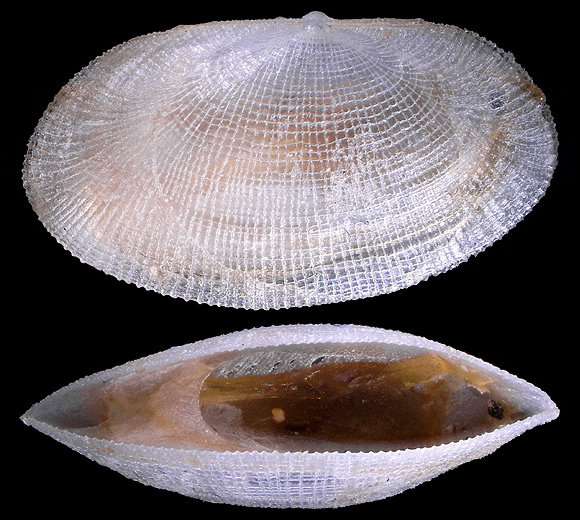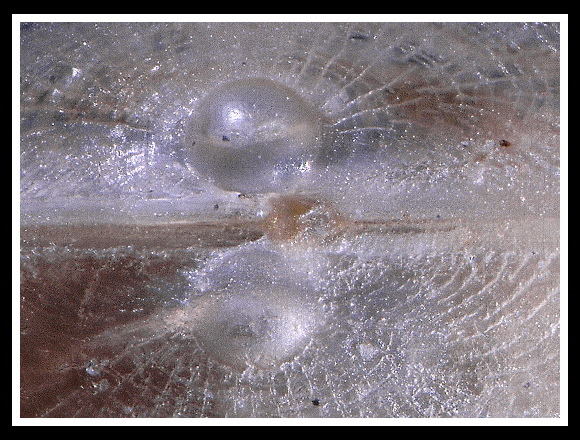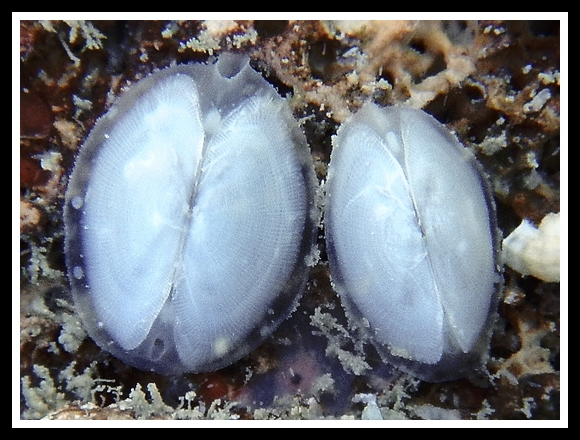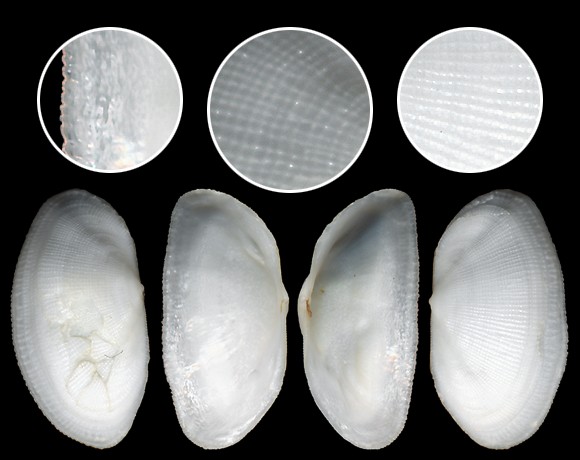
SW. British Isles & English Channel to Angola, Mediterranean. Lives often in small groups on hard subtratum, under stones in shallow water, down to circa 20m deep. The species can crawl, valves completely open. The male is dwarf (less than 1mm), and lives in the female’s mantle.
2m deep, San Lorenzo, Istria, NW. Croatia. 7mm.
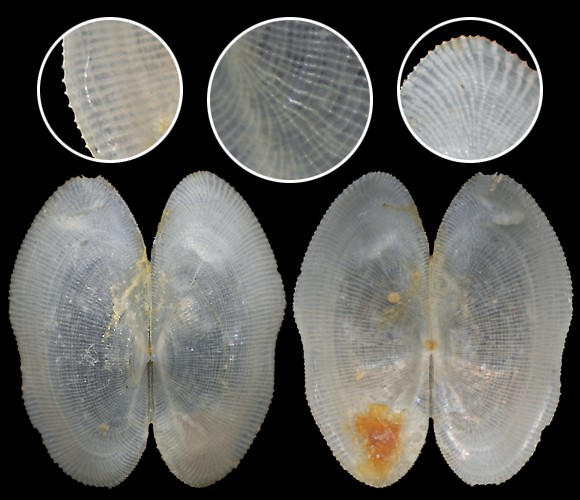
10-15m deep, Málaga, Andalucia, S. Spain. 9,5mm.
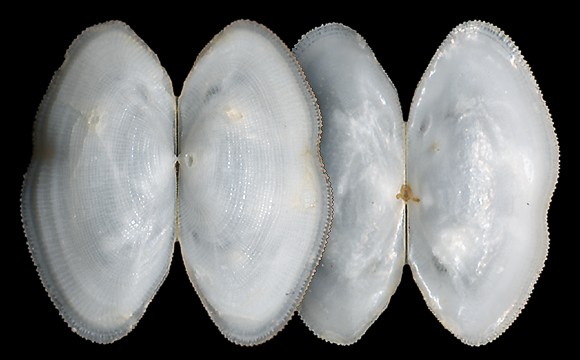
Debeli Rtic (Punta Grossa), Ankaran, Slovenia. 8,5mm.
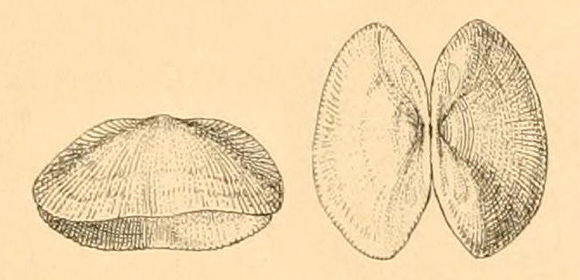
« Shell bivalve, equivalve, equilateral, transverse ; with a large oval gape at the front margin. Hinge without teeth. Ligament internal. […] The shell is very tumid in the middle, and gradually sloping to the sides, which are rounded and closed. The colour is of a dull milky white ; and the surface covered with short, close-set, transverse, interrupted, opake lines, very irregularly disposed, and which give the margin a serrated appearance. The beaks are rather prominent and central ; the cardinal margin running nearly straight ; but the front margin a little rounded, with a large oval eye-like transverse gape, extending the whole breadth. » – W. Turton: “Description of some new British Shells”, Zoological journal vol II, London 1826, via BHL.
Note: « Dr. Turton had omitted to give a specific appellation to this shell, probably supposing it to be the only species known. Mr. Sowerby however informs us that he has two other species, one from the Mauritius and the other from Van Diemen’s Land ; it is therefore necessary that a specific name should be given to this species, and we have chosen Turtoni, in honour of the first describer of the genus. — Editors. »
Note: « Dr. Turton had omitted to give a specific appellation to this shell, probably supposing it to be the only species known. Mr. Sowerby however informs us that he has two other species, one from the Mauritius and the other from Van Diemen’s Land ; it is therefore necessary that a specific name should be given to this species, and we have chosen Turtoni, in honour of the first describer of the genus. — Editors. »
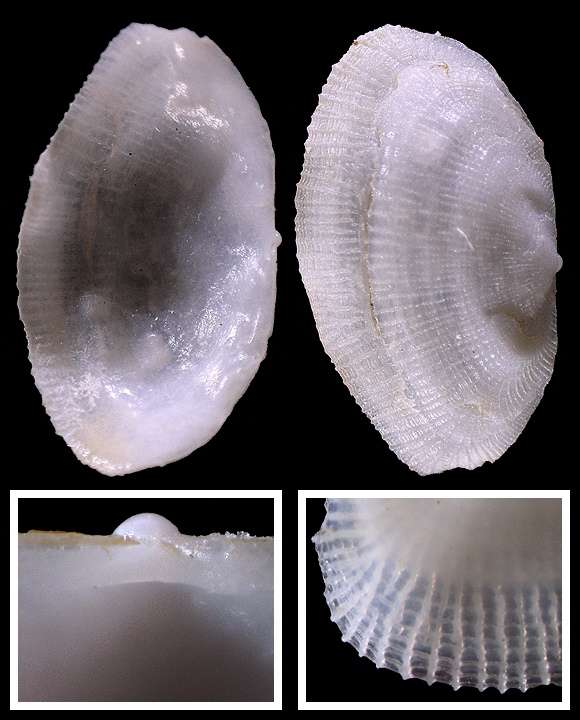
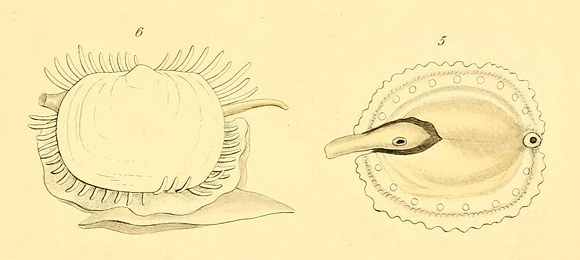
« Mr. Clark states that it adheres so strongly by means of its byssus, as, when the animal was taken, to require some force to detach it from the rock. “During twenty-four hours,” he states, “we kept it alive in a saucer, and three or four different times it spun a byssus, once detaching itself and leaving the threads behind, crawling to a short distance and then again attaching itself. We had the good fortune to witness the operation. From the slit at the root of the foot a light green glutinous matter was poured out with such rapidity, that in less than five minutes the animal was fixed. When detached it opened its valves, laying them on each side nearly flat, and marched across the saucer by means of its foot with such rapidity that ten could scarcely be counted : it seemed to be considerably assisted by the large margins of the mantle.” M. Mittre states that it lives on the roots and leaves of fuci at a depth of from three to four fathoms, and looks like beautiful pearls when seen beneath the water. » – Forbes & Hanley: op. cit. vol. II p.107-108.
